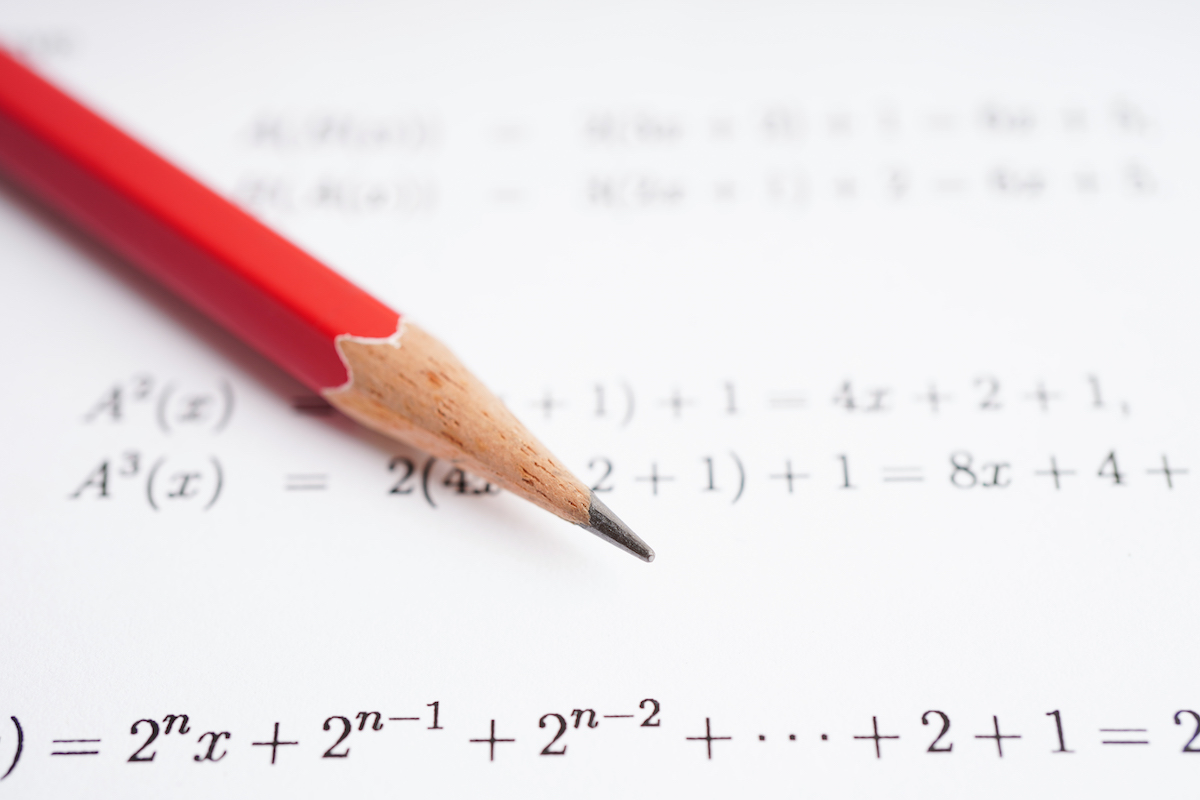
If you’re looking into a private middle or high school for yourself or your child, you’re probably researching what to do when it comes to preparing for the ISEE. The Independent School Entrance Examination (pronounced “i-see”) is used in the process of determining admissions for many private schools. Getting a good score on the ISEE sets students up for success on their applications, so it’s important to start preparing well ahead of time.
You might be wondering, “When should I start studying for the ISEE?” The best time to start preparing depends on your test date, but we recommend that you begin studying at least 2-4 months ahead of time. We also recommend that students take the test at least twice because retaking standardized tests can boost scores, so keep that in mind as you plan your ISEE prep timeline.
When to Take the ISEE
Before we dive into test dates, let’s cover the basics of ISEE testing. Typically, students are looking to prepare for three ISEE test levels:
- Lower Level: taken by students applying to 5th or 6th grade.
- Middle Level: taken by students applying to 7th or 8th grade.
- Upper Level: taken by students applying to 9th–12th grade.
Students may only take the ISEE test once per testing season. There are three testing seasons each year:
- Fall: August through November
- Winter: December through March
- Spring/Summer*: April through July
*The Spring/Summer testing season is typically only available to transfer students. So, plan for a first test during the Fall season and a second during Winter.
ISEE Exam Prep Timeline
Knowing all this about the ISEE, how can you make your studying as effective as possible?
We’ve developed a suggested timeline for studying the ISEE, using the example of a student applying to private schools with application deadlines in January. Use this timeline as a base for your own study plan, adjusting based on your application deadlines.
Our example student is applying to the ninth grade—the best time for them to begin ISEE prep is the summer before they enter eighth grade. They’re limited to the Fall and Winter testing seasons since they wouldn’t be a transfer student. In order to have enough time to study between their initial test and retake, this student should take their first ISEE in September or October and their second in December.
June or July: Take a Diagnostic Test
Since our example student plans to take their initial test in September or October, they should begin their preparations in June or July. Of course, every student will require a different amount of studying, but two to four months of ISEE exam prep is a good rule of thumb.
At the very beginning of their test prep, students should take a preliminary practice exam to understand their baseline score and see where their strengths and weaknesses lie. Knowing their current capabilities will inform their practice going forward and help them see how they progress throughout their test prep journey. Take advantage of the free mini-diagnostic exam that Piqosity offers to new sign-ups to see what score you or your student would receive on the ISEE test today.
After taking a diagnostic test, the student should start becoming familiar with the content they saw on the test. Understanding what is tested on the ISEE, especially topics that were difficult or answered incorrectly, can put students in a better position to start their ISEE studying journey. Guiding your preparation with the knowledge of your strengths and weaknesses will maximize its benefits.
July–August: Practice, Practice, Practice!
Once a student has their baseline score and knows how much time they have before the exam, it’s time to study! The best way to ensure that they’re learning consistently and progressing towards their goal is developing a test prep routine. Students should set intermittent goals for their progress and create a realistic schedule that they’ll stick to.
Every student has a different learning pace and attention span, so no one schedule will work for everyone. Still, we recommend that a solid pace is three hours of test prep a week—one hour of learning and two hours of practice material.
Learning ISEE Content
As students learn concepts (using online lessons, prep books, or video lessons), they should cycle through the subjects tested on the ISEE:
The learning aspect of this preparation will teach them the concepts they don’t know and refresh their existing knowledge of other topics. To optimize this learning, we recommend the following study structure for each week:
- 30 minutes of reading and watching lessons about any ISEE material (preferably their weak topic areas).
- 15 minutes reviewing tested concepts in math.
- 15 minutes reading and studying vocabulary words.
- 15 minutes learning basic test-taking strategies.
As students are learning, they should make sure to read and/or listen actively. Nobody wants to devote 30 minutes of their time to learning ISEE topics only for that knowledge to evaporate from their brain because they weren’t fully focused. Here are some ways to stay engaged with what you’re hearing/reading:
- Take notes. Whether you use a specific style of note-taking or just write bullet points about each topic, writing down the information you take in will help you remember it. (You can even turn them into flash cards or your own practice problems!)
- Highlight. If your ISEE learning is reading-based, highlighting key words will help you stay engaged with the text. (If you’re learning online, you can use a digital highlighter tool!)
- Talk through it aloud. This can look like reading part of a lesson out-loud or pausing a video lesson to repeat what was just said—stating information aloud will help you remember key ideas and think through problems.
- Check-in with yourself. When you feel tempted to pick up your phone or catch yourself slipping into a daydream, take a minute to stand up and check in with yourself. Quiz yourself as you work through a lesson to help stay engaged.
Practicing ISEE Content
In contrast to the learning aspect, the practice aspect of a student’s ISEE prep should prioritize working through sections of full-length practice tests. Not only will this help students practice what they’ve learned, but it will help them get comfortable taking the test. Being familiar with the way questions are presented and the test’s timing will help them stay focused and calm on the real test day.
So, a suggested breakdown of a student’s weekly practice would include:
- 20–35 minutes of working through a Verbal Reasoning or Reading Comprehension section from a full test.
- 35–40 minutes of working through a Quantitative Reasoning or Mathematics Achievement section from a full test.
- 25–30 minutes of supplemental short bursts of practice for weak points.
What Does a Week of ISEE Prep Look Like?
Let’s look at an example week of preparation might look like, using our eighth-grade example student and assuming they want to break their ISEE exam prep into four ~thirty-minute sessions a week.
- Day 1: 30 minutes of reading/watching lessons covering their weak points in ISEE math concepts.
- Day 2: 20 minutes spent working through the entire Verbal Reasoning section of a full-length practice test + 10 minutes reviewing results, taking note of which questions were most difficult.
- Day 3: 35 minutes spent working through the entire Quantitative Reasoning section of a full-length practice test.
- Day 4: 15 minutes spent reviewing their Quantitative Reasoning practice, taking note of their most challenging concepts + 15 minutes spent reviewing test-taking strategies.
The next week, the student would work through the Reading Comprehension and Mathematics Achievement sections of the full-length practice test they started the previous week. They could swap out their 30 minutes of math review for vocabulary practice if that would be more beneficial for them.
Of course, every student will have different needs. Therefore, their practice should be tailored to their specific strengths and weaknesses, the time they can dedicate to ISEE exam prep each week, and their score goals.
September–October: First Test Attempt
In September or October, we recommend that a student takes their first attempt at the ISEE test. Going back to our example student, they would be in the first semester of their eighth grade year when they take the ISEE test for the first time.
We recommend that students first take the exam in the middle of the fall testing season because it will allow them to get more of the next grade level in before testing. For instance, our example eighth grader prepping for the Upper Level ISEE can learn more Algebra I content in school before being tested on it.
Of course, taking tests can be a stress-inducing experience for many students, especially when it comes to standardized tests. That’s where test-taking strategies and test anxiety management comes into play. Giving yourself enough time to take the ISEE twice also helps with test-taking anxiety since you have multiple chances to get your best scores.
October–November: Practice More!
Since the winter testing season doesn’t start until December, the period between the two chosen test dates should be spent learning and practicing with a focus on weak points. Therefore, this preparation routine will likely look different than a student’s first round of ISEE exam prep.
Let’s say our example eighth-grader now has their first ISEE scores back. They excelled in Verbal Reasoning and Reading Comprehension, leaving little room for improvement. However, they’d like to improve their scores in Quantitative Reasoning and Mathematics Achievement. In that case, they’d spend less time learning and practicing ELA and more time studying math topics.
So, you shouldn’t spend as much time on sections you already excelled in, dedicating most of your time to subjects you find more difficult. Ultimately, the goal of this second preparation period is to bolster your score as much as possible. As such, your first-test scores and analysis should guide your second round of ISEE exam prep.
December: ISEE Test Day, Part 2!
Once in the winter testing season, a student should take the ISEE for a second time. We’re recommending December with the context that our example student must submit their scores to schools by January. However, it is really just important to keep two things in mind when picking a second test date:
- Giving yourself enough time to improve your scores.
- Ensuring that you have enough time to submit your scores to schools before their application deadlines.
If your applications aren’t due until February, take your second ISEE in January. This way, you’ll have all of December (plus the weeks prior to the test in January) to study and still have some time to get your scores back before applying.

The Best ISEE Course Online—Piqosity
As we’ve described above, Piqosity is here to help you excel on your ISEE exam prep journey! Along with our full-length, online ELA and Math courses for grades 5-11, we offer full test prep courses for the lower, middle, and upper level ISEE, each of which includes 10 practice exams, dozens of concept lessons, personalized practice software, and more.
Plus, Piqosity’s Virtual Tutor just got a major update! PVT 2 guides you through a full course, suggesting targeted practice based on your schedule, goals, and topic strengths and weaknesses.
The best part—you can try out all of Piqosity’s features with our free community account. When you’re ready to upgrade, Piqosity’s year-long accounts start at only $89.


